Genre: Shmup Developer: Sales Curve Publisher: Time Warner Interactive Players: 1 or 2 Released: 1994
Third in a series of shooters that started with the awesome Silkworm, Mega SWIV is actually a port of the Super Nintendo game Super SWIV, more commonly known in the west as Firepower 2000. With a strong military theme and a perennial Amiga flavor reminiscent of the previous chapter in the series, the game stands tall as a decent adaptation. Later on, the SWIV series would go full 3D, unfortunately ending with a PC-only chapter released in 1996. Besides being a port, one of the other distinctions of Mega SWIV is that it was released only in Europe. And just like the only other European exclusive Mega Drive shmup (Xenon 2 Megablast) this game is region-locked, so in order to enjoy it in consoles from other regions be aware that you might need to use bypass cartridges. There’s no frequency optimization and as expected, the game runs faster when played on a 60 Hz console.
On gameplay merits it’s as close as it gets to the original material, unlike some criticized cross-platform examples such as Thunder Spirits. There are two vehicles to control in Mega SWIV: a helicopter (SWIV-1) and a jeep (SWIV-2). In a two-player game each person pilots one of them, but if you’re playing solo you need to press A, B or C at the start screen to choose/change the craft. There it’s also possible to remap the controls, which by default work with B for main weapon, A for main weapon change and C for special weapon. Much of the fun is in experimenting with both types of ship. A brief animated intro sets up a nice preamble for the action, also showing info stats for each SWIV craft. For those wondering, SWIV stands for Special Weapons Intercept Vehicle.
The beginning of the game seems a bit generic (the first stage is exclusive to the Mega Drive version though), with grayish terrains followed by deserts and forests. Jeep players will get to pilot an inertia-propelled boat on the second half of the fourth stage. During the fifth stage both players pilot a jet, and then the game resumes in a volcano-filled area before you venture into the final enemy fortress. All along the music is remarkably bassy and fits the theme well.
Weapon items are mostly released by destroying yellow square bunkers on ground level. Main weapons can be bullet (needle gun), flame, plasma (spread shot), laser (flashing laser beams) or ionic (a straight shot that splits to the sides in 90 degrees upon hitting something). Laser and ionic are unavailable from the start, appearing in later levels only. All weapons are powered up separately by taking successive items of the same type, up to seven upgrade levels. Special weapons are indicated by letters. H stands for homing bullets, X fires a single batch of straight missiles and S triggers an expanding ring of fire. The most recent weapon collected is always the next one to be used (last in, first out). It’s possible to stock as many special weapons as you want, but only twelve of them are shown below the score counter at any given time. X is the most powerful (a single one can take down any of those hatches of the third boss) while S is excellent to take care of enemies that are closing in. H is the weakest and tends to drift in circling movements, often failing to hit the desired target. Special weapons aren’t lost upon death, and as long as there are special weapons in stock the level of each main weapon is only visible while you’re cycling them with button A or briefly after you die.
Besides the regular items used to increase firepower there are other goodies to be collected as you go. It’s always nice to come across a small area concealing a bubble, for instance. Land a few shots to release the bubble and take it for a temporary invincibility shield, or shoot it again to trigger a screen-clearing explosion. Another item, the star, is mostly released by tanks but can be dropped by other enemies as well. Besides being worth 100 points, at the end of the stage each star contributes with 1.000 extra bonus points. Death for both SWIVs comes with a reduction of one upgrade level for all weapons, therefore dying repeatedly can lead the player to a dangerous underpowered condition.
Most people prefer the helicopter as best option to play the game, but it’s clear that both vehicles have their own pros and cons. The heli crashes onto airborne enemies but is able to fly anywhere around the screen, and is absolutely immune to ground enemies. The jeep crashes against any ground obstacle that takes damage (including item bunkers and shield holders – release them first, collect next), but can fire in eight directions (shoot to lock the aim, stop shooting to change direction) and is absolutely immune to airborne enemies. Don’t forget that the jeep can fall off cliffs (last stage only) and be hindered by walls, but whenever it gets squished by something the scrolling takes over and sends it forward. There’s no jump input for the jeep in Mega SWIV, unlike in Firepower 2000.
Other minor differences in relation to the SNES original appear in the slightly less colorful graphics, lighter explosions and subdued sound effects. A few enemies are missing here and there, and since the game was made less intense the annoying off-screen bullets when you move across the wide horizontal span of the playing field aren’t such a pain. That alone should make the Mega Drive port the easier version, but the game also counts with a merciful extend scheme that grants a new life for every 50.000 points scored. The bonus based on the number of remaining lives at the end of the game was removed though, but this doesn’t really matter because there’s no time out and you can kill cannon fodder forever on the last boss for whatever score you want to achieve. The maximum life stock shown during the actual gameplay is nine, but the real number of lives can be glanced in between stages.
Although not much of a killer in solo play, the unusual combination of a helicopter and a jeep is what makes Mega SWIV a contender for best co-op shmup experience to be had on the Mega Drive. Call a friend, crank up the volume and buckle up for some good old 16-bit military shooting action. Your mission is to strike the evil underground menace that threats our planet.
Are you ready?
SCORE: 6 out of 10

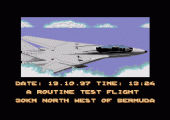
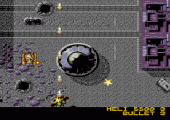
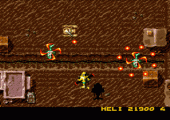
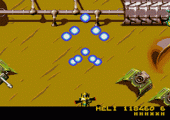
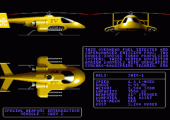
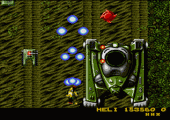
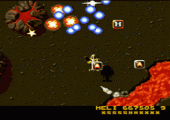
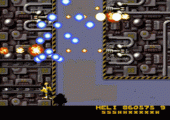
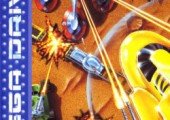
Recent Comments